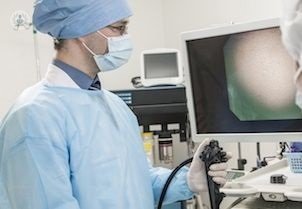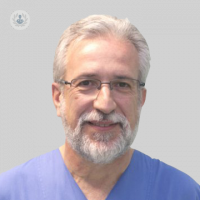Therapeutic endoscopy, new treatment for digestive tract problems
Written by:Problems that traditionally required a surgical operation, now resolved without 'open' to the patient.
Therapeutic endoscopy treatment
The endoscopy was born as a diagnostic procedure digestive system which aims to "see inside" those organs accessible through natural orifices such as the mouth, nose or anus. What began with the optical fiber, video is now; and what began as a diagnostic method, now offers multiple therapeutic applications.
These can be as varied and important as cutting a bleeding duodenal ulcer or a stent to unclog an intestine plugged by a tumor. Emergency endoscopy to diagnose the cause of bleeding and control it with various techniques (sclerosis, clipping, thermal coagulation with argon gas, etc.) to avoid risk-laden emergency operations.
In short, endoscopy, besides being a method for diagnosing diseases such as ulcer or cancer, allows treatment of pathologies resolution and very frequent. Advances in the field of endoscopy have forced some gastroenterologists have to be 'super specialize' in what is now called advanced therapeutic endoscopy.
What is endoscopy?
The most common current therapy is the removal of polyps (small growths of the intestinal mucosa that may progress to cancer), which is the basis for the prevention of colon cancer. We can effectively treat diseases such as achalasia cardia alteration that prevents the passage of food from the esophagus to the stomach; varices appear in the esophagus, or narrowing of the gastrointestinal tract that hinders the passage of food or intestinal contents. But not only access the digestive tract, either through the mouth or anus, also we can introduce in the bile ducts and remove stones or tumors causing jaundice permeable to block the flow of bile.
The most common pathology to be treated are polyps and their removal or polypectomy. When an endoscopy of the colon (colonoscopy) is performed and the endoscopist identifies a polyp removed as entering through the working channel of the endoscope the specific instruments enabling polyp embrace and cut with an electric current to coagulate at the same time to avoid bleeding, as an electric scalpel. The polyp is removed and sent to the laboratory for analysis. This procedure can be repeated as often as polyps are in exploration.
I will fulfill myself endoscopy, what do I know?
The preparation depends on what is to be treated. As a general principle, the interventions made by the mouth (a gastric polypectomy, esophageal dilation, closing an ulcer, etc.) require the patient has fasted for at least 6 hours there is no food scraps obstruct the view or create a risk of aspiration. When the approach is through the anus, colon cleansing is critical and for this we prepared than previously taken and washing the intestine so that there is no faecal remains. Some of these operations require premedication with antibiotics such as when a prosthesis is placed in the bile ducts, or suspension of any medication that you can take the patient so that blood does not clot.
Endoscopy is an invasive technique in any version and therefore troublesome and unpleasant. Therefore it is performed under sedation or anesthesia for the patient is comfortable and the endoscopist can solve effectively and safely.
Endoscopy and risks
The objective of the medical team performing the intervention (endoscopist, nurse / anesthetist, etc.) is to solve the patient's problem effectively, minimizing the risk of complications and that these, treating them properly and immediately occur.
In the treatment of polyps, the most common complication is bleeding that occurs despite using instruments that cut and coagulate. This bleeding can be stopped immediately without the need to suspend the colonoscopy or giving option to the patient to lose a significant amount of blood.
Another complication of any endoscopic surgery in the gastrointestinal tract is perforation. It is a complication requiring emergency surgery to close the perforation but currently available techniques and suture therethrough endoscope allowing in situ repair avoiding operations and facilitating recovery.



